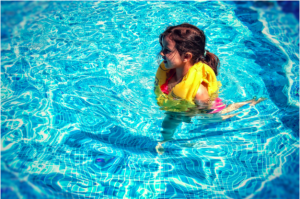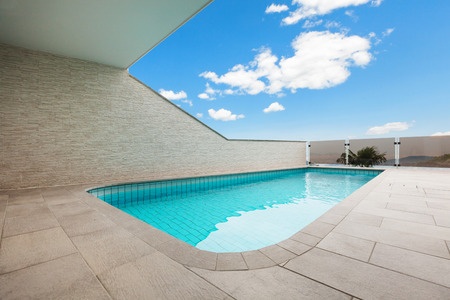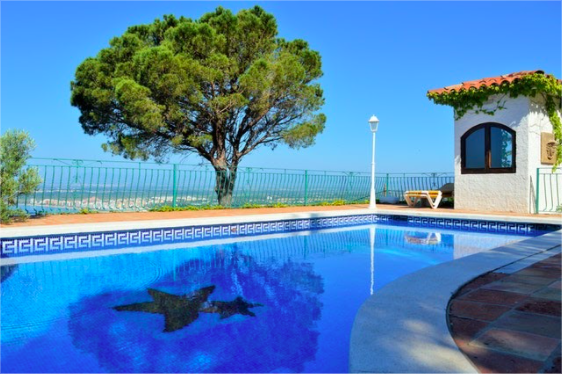4 Signs it’s Time to Replace Your Vinyl Pool Liner
Publication date : Monday, December 7th, 2020
Replacing a vinyl pool liner is an investment, which is why most pool owners are hesitant to replace them at the first sign of trouble. But waiting to replace your liner could cause more damage down the line.
On average, and with proper maintenance, vinyl liners last about 10-15 years. This sounds like a long time, but it comes quickly! The good news is that you can replace your liner, refresh the look of your pool and get a thicker, higher quality material all at the same time.
Below are four signs that it’s time for a vinyl liner replacement in Jackson.
1. Cracks and Rips
One of the most obvious signs that your liner needs to be replaced is when it starts to crack and rip. Over time, the UV rays from the sun and the pool chemicals needed for maintenance break down the liner. This causes the vinyl to be delicate, and it can easily rip or tear. You’ll typically notice these cracks near the surface of the water.
A word of caution, though. A small leak does not necessarily mean your liner needs to be replaced. Most small leaks can be repaired with a basic liner patch kit. It’s only when there’s multiple rips or a rip that you can’t fix with a patch that requires a new liner.
2. Fading or Staining
Another sign of UV and chemical damage is when your vinyl liner starts to fade or show stains. In fact, this sign typically comes before the cracks and rips. This fading means that the liner is becoming brittle and will eventually be sensitive to tearing.
3. Stretching and Wrinkles
It’s common for vinyl liners to lose some of their plasticity and elasticity over the years. Sometimes, the wrinkles can get so bad, they’ll pull the liner out of the track at the top of the pool. You can try to pop it back in, but it’s possible that it may not work with you. If this happens, or the problem keeps coming back, it’s time for a new liner.
4. Water Leaks
Not all leaks and cracks are easy to spot, so you’ll want to monitor any water loss, especially as your liner nears the end of its lifespan. If the leaks are below the surface of the water, you probably won’t see them so it’s helpful to watch for water loss. If you believe you’re experiencing loss, use a simple “bucket test” to determine if you’re losing water from a leak or natural evaporation.
If you’re noticing any of the signs listed above, it’s probably time to update your vinyl liner. Don’t try to squeeze more life out of your liner, as this can lead to more costly problems down the road. Instead, use this time to find a high quality liner that will add valuable years onto your swimming pool.
5 Things to Love About Vinyl Pool Liners
Publication date : Wednesday, February 22nd, 2017

Paradise Pools installs vinyl, fiberglass and gunite swimming pools. Today we want to talk about the benefits of vinyl swimming pools and why they are our most popular type of installation. If you have additional questions about vinyl pool construction and how it can benefit your home, don’t hesitate to give us a call. We are happy to provide you with a custom quote that keeps your needs and budget in mind!
Below are five things to love about vinyl pool construction and why it might make a great fit for you, too!
1. Vinyl liners give you the best value for your money.
Of the three types of liners we install, vinyl is the most economical. They have the lowest initial cost, ranging from $10,000 to $20,000 less than fiberglass and gunite. You get more swim room per square foot, and maintenance and repairs are less than other types of pools. If you need to stick to a budget, we highly recommend a vinyl pool.
2. Vinyl swimming pools can be customized to your liking.
Vinyl liners have endless customization options. There are very few limitations in terms of size, width and depth, so you can tackle any design you want! Standard shapes and sizes are what you will choose from first, and then you can go ahead making customizations if you choose.
3. Vinyl liners require little maintenance.
No pool is completely maintenance free, but vinyl pool liners are close! Since the surface is nonporous, the risk of algae growth is much lower. There are also less sanitizing chemicals needed because the pool stays cleaner. These types of liners wear gracefully so you can enjoy a nice looking pool for years to come!
4. Vinyl pools have smooth bottoms for comfortable swimming.
Unlike other types of pool bottoms, vinyl is smooth to the touch. This leaves a comfortable environment for swimmers, which especially comes in handy if you want customizable options like benches, steps and swim outs.
5. Vinyl swimming liners can be easily repaired or replaced.
Vinyl liners do need to be replaced every 7-10 years, on average. Though this is a drawback to these liners, don’t let that hold you back. A replacment costs between $2,500 and $4,000 and only takes about 2 days. If any leaks or holes are detected before that, they can be replaced in about 5-10 minutes using a repair kit.
Still have questions? Give Paradise Pools a call and we’ll be happy to provide you with additional information.
Fiberglass vs Vinyl Liner vs Concrete Pools
Publication date : Sunday, April 17th, 2016
 Wouldn’t it be nice if someone could give you an unbiased opinion on the advantages and disadvantages to fiberglass, vinyl liner and concrete pools? Well, you’re in luck!
Wouldn’t it be nice if someone could give you an unbiased opinion on the advantages and disadvantages to fiberglass, vinyl liner and concrete pools? Well, you’re in luck!
Here at Paradise Pools, we want to provide you with honest, reliable information so that you can make informed choices for your household.
In this article, we’ve outlined the pros and cons to each type of pool so that you can get a good idea of which features come with each type of pool.
Let’s get started.
Fiberglass Pools
Advantages
- Low Maintenance. Fiberglass pools require the least maintenance of the three. The solid surface is nonporous, so you don’t have to worry about algae growth and sanitization as much. Also, there is no liner replacement necessary.
- Built-in Features. Fiberglass pools have the option for built-in features such as seating, steps and even tanning ledges.
- Fast Installation. Because the shells of fiberglass pools are constructed off site, installation is fast and easy. Most pools are ready in 3-4 weeks.
- Easy Repairs. If there are any scratches or cracks that occur, the surface can be repaired. You’ll hardly notice anything happened!
Disadvantages
- Limited Design Options. If you’re looking for a custom pool, fiberglass makes this much harder. The shells are constructed from standard molds, making shapes and sizes limited.
- Width Limitations. Fiberglass pools are built and then delivered. Shipping restrictions are no more than 16 feet, which means you can’t have a fiberglass pool wider than this.
- Higher Cost. Fiberglass pools are between $5,000-$10,000 more than a vinyl pool.
Vinyl Liner Pools
Advantages
- Affordable. Vinyl liner pools are the most economical pool choice. You essentially get the same amount of swim space for less than other pool types.
- Customizable. You can choose any shape or size for your vinyl liner pool. There are no limitations. You can even have a certified diving pool!
- Easy Maintenance. The surface of a vinyl liner pool is non-porous, just like fiberglass. This results in less maintenance and lower production of algae growth.
- Simple Repairs. If there is a tear in the vinyl, it can be quickly and easily repaired with no downtime.
Disadvantages
- Liner Replacement. Vinyl liner pools require a liner replacement every 7 to 15 years. This can cost between $3,000 and $5,000.
- Limited Features. Customizable options like built-in seating and tanning ledges are limited.
Concrete Pools (Gunite Pools)
Advantages
- Unlimited Customization Options. The ball is in your court when it comes to concrete pools. Choose any shape, size and depth you want. Or opt for vanishing edges, water features or beach entries.
- Artful Features. Not only can you customize the obvious features of a concrete pool but also build in works of art. Geometric shapes, integrations with your landscaping and colorful stones are all examples.
Disadvantages
- Expensive. Concrete pools are all-around expensive. They cost a lot to install, a lot to maintain and a lot to repair. Concrete pools need to be renovated every 8 to 12 years, and this can cost as much as $15,000 or more.
- High Maintenance. Because the surface of concrete is porous, additional maintenance is required. Not only will you need to monitor algae growth but also add extra acid to counterbalance the pH levels, which rise because of the alkaline pH of the pool.
- Long Installation. On average, it takes 2 to 4 months to build a concrete pool. This is one project that needs to be planned in advance.
We hope that you have found this information helpful! Call Paradise Pools to learn more about installing and maintaining your swimming pool!


 CALL US TODAY!
CALL US TODAY!

 Wouldn’t it be nice if someone could give you an unbiased opinion on the advantages and disadvantages to fiberglass, vinyl liner and concrete pools? Well, you’re in luck!
Wouldn’t it be nice if someone could give you an unbiased opinion on the advantages and disadvantages to fiberglass, vinyl liner and concrete pools? Well, you’re in luck!


